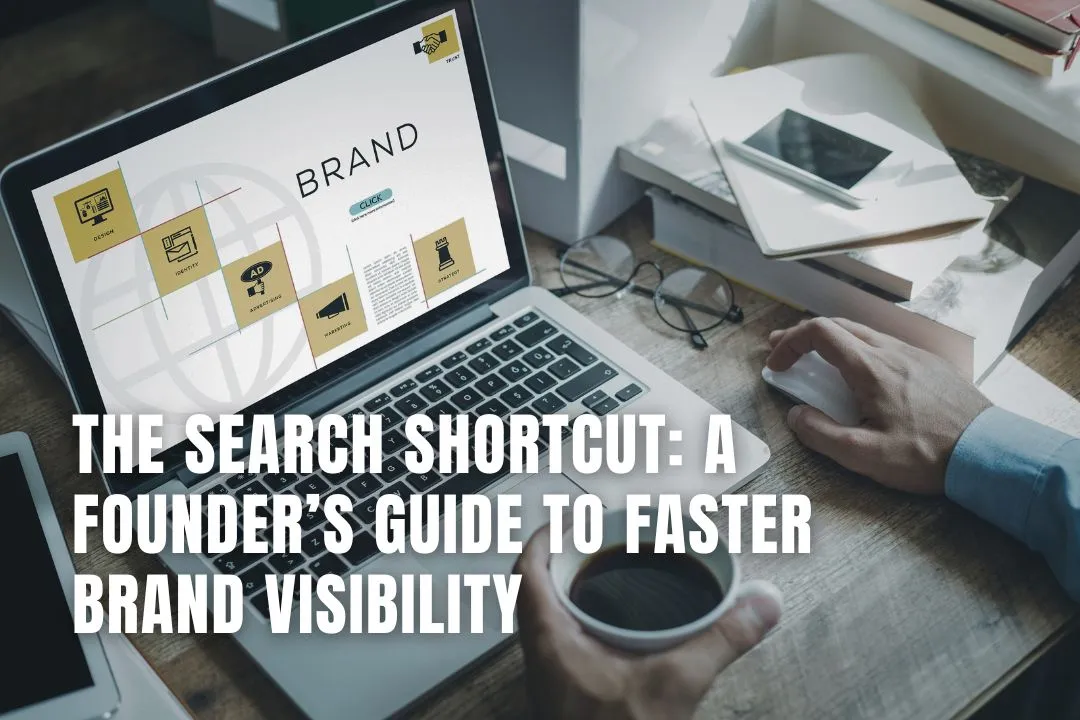
Editorial Disclaimer
This content is published for general information and editorial purposes only. It does not constitute financial, investment, or legal advice, nor should it be relied upon as such. Any mention of companies, platforms, or services does not imply endorsement or recommendation. We are not affiliated with, nor do we accept responsibility for, any third-party entities referenced. Financial markets and company circumstances can change rapidly. Readers should perform their own independent research and seek professional advice before making any financial or investment decisions.
Let’s face it - getting seen is half the battle when you’re starting a business. You’ve got the product. You’ve poured over branding. Your pitch is tight. But the silence online? That part can make even the most confident founder question their game plan.
Organic growth is great. But it’s slow, unpredictable, and in today’s noisy market, just not enough on its own. This is where paid search, or SEM (Search Engine Marketing), becomes your shortcut to visibility. It’s not about throwing cash at ads and hoping for magic. It’s about working smarter, not harder, especially when you’re bootstrapping or racing the clock.
One way many founders jumpstart visibility is by partnering with experts offering search engine marketing services, giving them a clearer path to traction while they focus on building the business. But even if you’re starting DIY, there’s a way to do this right, and without burning through your launch budget.
Here’s how to get started, keep it lean, and scale smart.

Before you even open a Google Ads account, pause.
What’s the actual problem you’re trying to solve with paid search? Do you need to:
Nailing this down early helps shape every SEM decision you’ll make, from keyword selection to copy to landing page layout. If you skip this part, you’ll likely end up targeting the wrong audience or tracking the wrong metrics.
So, ask yourself: “If this campaign worked, what would success look like?” Be brutally specific. You’re not buying impressions. You’re buying action.
One of the biggest SEM mistakes founders make? Going too big, too soon.
It’s tempting to set a high daily budget and hope for a rush of traffic. But the smarter approach is this: start lean and test obsessively. You’ll learn faster and spend less doing it.
Here’s a basic SEM test budget formula:
Don’t expect perfect conversions during this phase. Instead, focus on learning:
Once you spot signs of traction, that’s when you increase spend, strategically.
There are keyword tools galore, but in the beginning, you only need two things:
Start with high-intent phrases. If you’re selling custom meal plans for vegans, don’t bid on “healthy recipes.” That’s too broad. Try something like “custom vegan meal plan delivery” or “vegan diet coach online.” These might have lower volume, but the people searching them are more likely to take action.
Also, don’t ignore branded keywords, even if you’re new. Some of your earliest searchers will be friends, referrals, or curious lurkers. Make sure your brand name actually shows up when they Google it.
Founders often get caught up in metrics and targeting, but skip right past the actual ads. Big mistake.
Here’s the rule: people scroll fast. Your ad has about 3 seconds to make a dent. Keep it clear, urgent, and benefit-focused.
Try this quick framework:
Also, if your brand has personality, use it. Don’t write like a robot. You’re a founder, not a bureaucrat.
Clicking on an ad and landing on a generic homepage is like being invited to a party and arriving at an empty parking lot.
Your landing page needs to match your ad, both in message and intent. If your ad promises “next-day flower delivery in Sydney,” your landing page should say that clearly above the fold. Otherwise, people bounce.
Here’s what to include:
Use tools like Unbounce, Webflow, or Leadpages if you want speed without a dev team.
In the early days, you don’t need a full analytics dashboard. What you need are a few key metrics:
Ignore vanity metrics like impressions or bounce rate for now. They’ll distract you. Focus on actual engagement and results.
A few quick examples of startup founders who used SEM to get off the ground:
The takeaway? SEM works when you match high intent with high clarity, and test without fear.
If SEM starts eating too much of your time, or your results plateau, it might be time to get help.
Agencies that specialise in search engine marketing services aren’t just there to press buttons. The good ones act like growth partners. They bring deep keyword research, better creative testing, tighter analytics, and, crucially, more time for you to focus elsewhere.
You don’t have to outsource everything. Some founders keep strategy in-house but bring in help for ad copy or analytics. Even a short-term engagement can sharpen your long-term play.
Let’s keep it real: SEM can be frustrating if you’re not careful. Common traps include:
Take a beat, test one thing at a time, and give each experiment a fair shot.

Every founder has that “why is no one seeing this?” moment. But unlike organic strategies that take months, SEM gives you control, fast.
You get to test messaging. Understand what clicks. See actual buying behaviour. And most importantly, you get feedback. Feedback you can’t get from friends or followers.
The trick isn’t to spend more. It’s to spend smarter.
SEM doesn’t replace product-market fit, but it can get you the audience you need to find it. Treat it as your test lab, not a magic bullet, and you’ll be miles ahead of most first-time founders.
SEM, or Search Engine Marketing, uses paid ads to get your brand seen quickly on search engines. It helps new businesses gain immediate visibility, attract early customers, and test their market approach faster than organic methods alone.
For an initial test, a founder should consider a budget of around £10-£30 per day for 10-14 days. The goal is to get 100-200 clicks to learn what works, rather than expecting immediate high conversions.
Focus on high-intent, specific keywords that customers are likely to type when they are ready to buy or sign up. Avoid overly broad terms. Also, include your brand name, even if you are new, as early searchers might be looking for you directly.
Dedicated landing pages ensure that the message on your ad matches the content on the page. This consistency helps prevent people from leaving quickly, improving your conversion rates by guiding visitors directly to the action you want them to take.
If managing SEM campaigns starts taking up too much of your time, or if your results are not improving, it might be time to bring in a specialist. They can offer deeper research, better ad testing, and more refined analytics, freeing you up to concentrate on other business areas.
Let’s face it - getting seen is half the battle when you’re starting a business. You’ve got the product. You’ve poured over branding. Your pitch is tight. But the silence online? That part can make even the most confident founder question their game plan.
Organic growth is great. But it’s slow, unpredictable, and in today’s noisy market, just not enough on its own. This is where paid search, or SEM (Search Engine Marketing), becomes your shortcut to visibility. It’s not about throwing cash at ads and hoping for magic. It’s about working smarter, not harder, especially when you’re bootstrapping or racing the clock.
One way many founders jumpstart visibility is by partnering with experts offering search engine marketing services, giving them a clearer path to traction while they focus on building the business. But even if you’re starting DIY, there’s a way to do this right, and without burning through your launch budget.
Here’s how to get started, keep it lean, and scale smart.